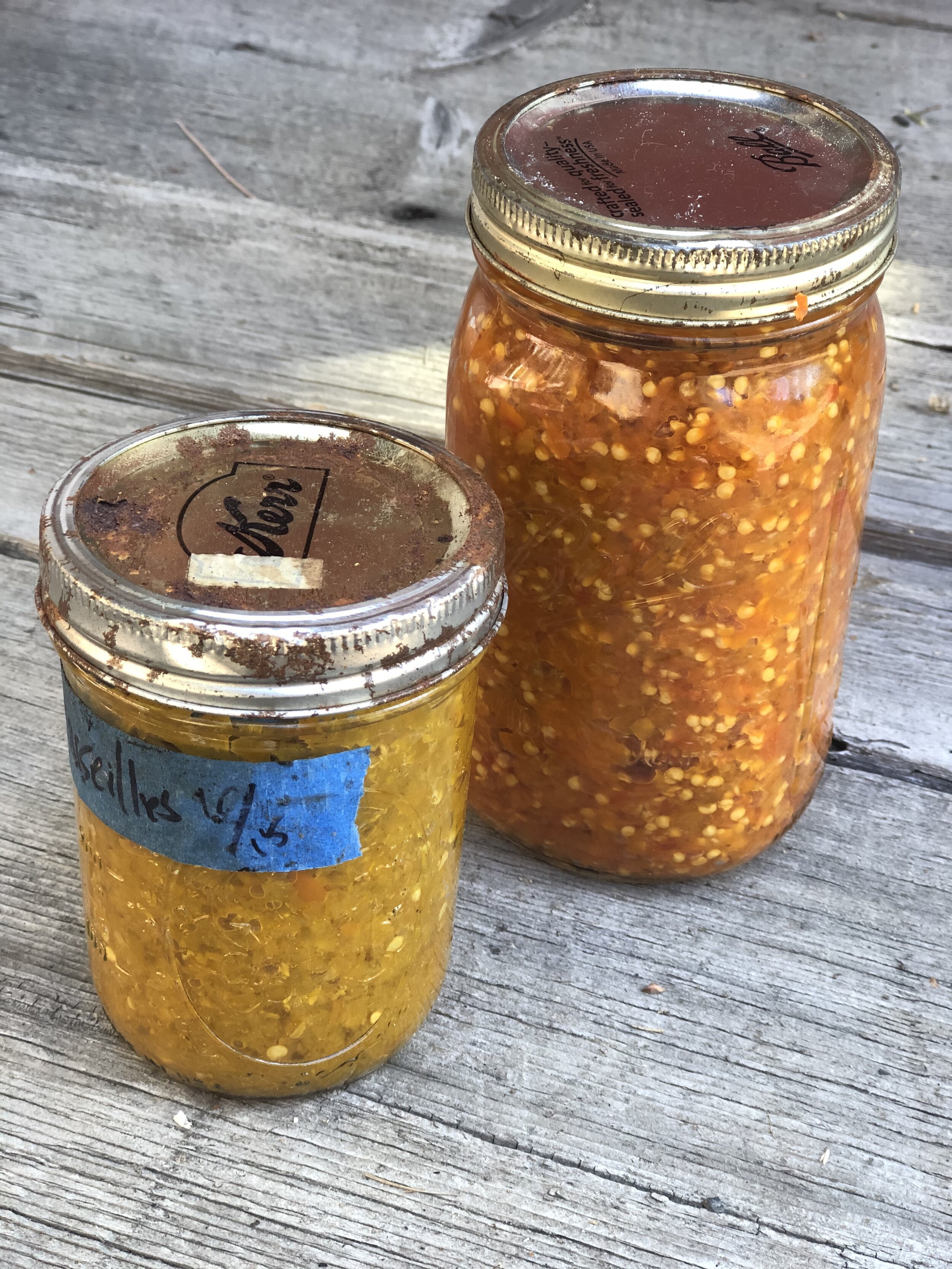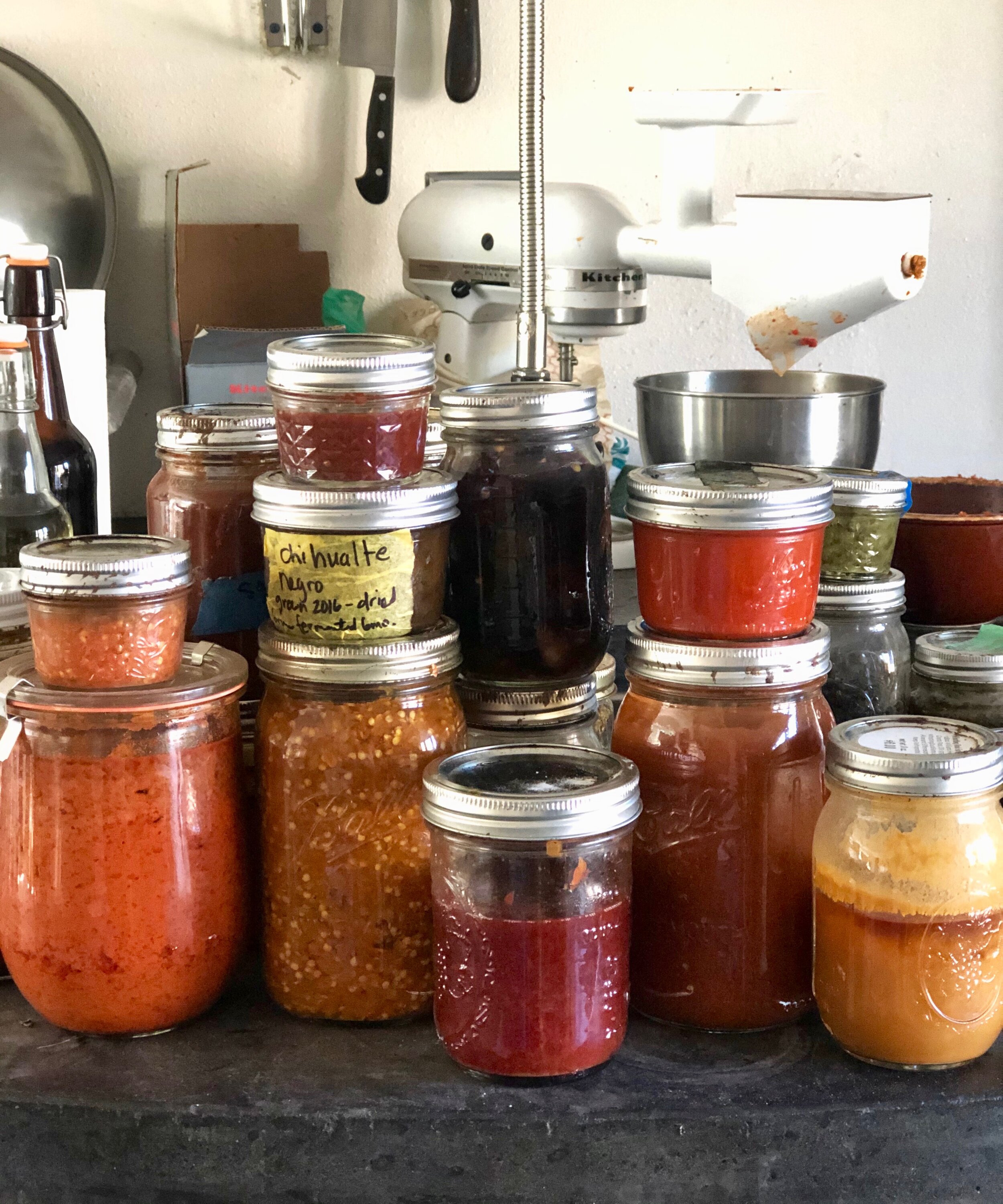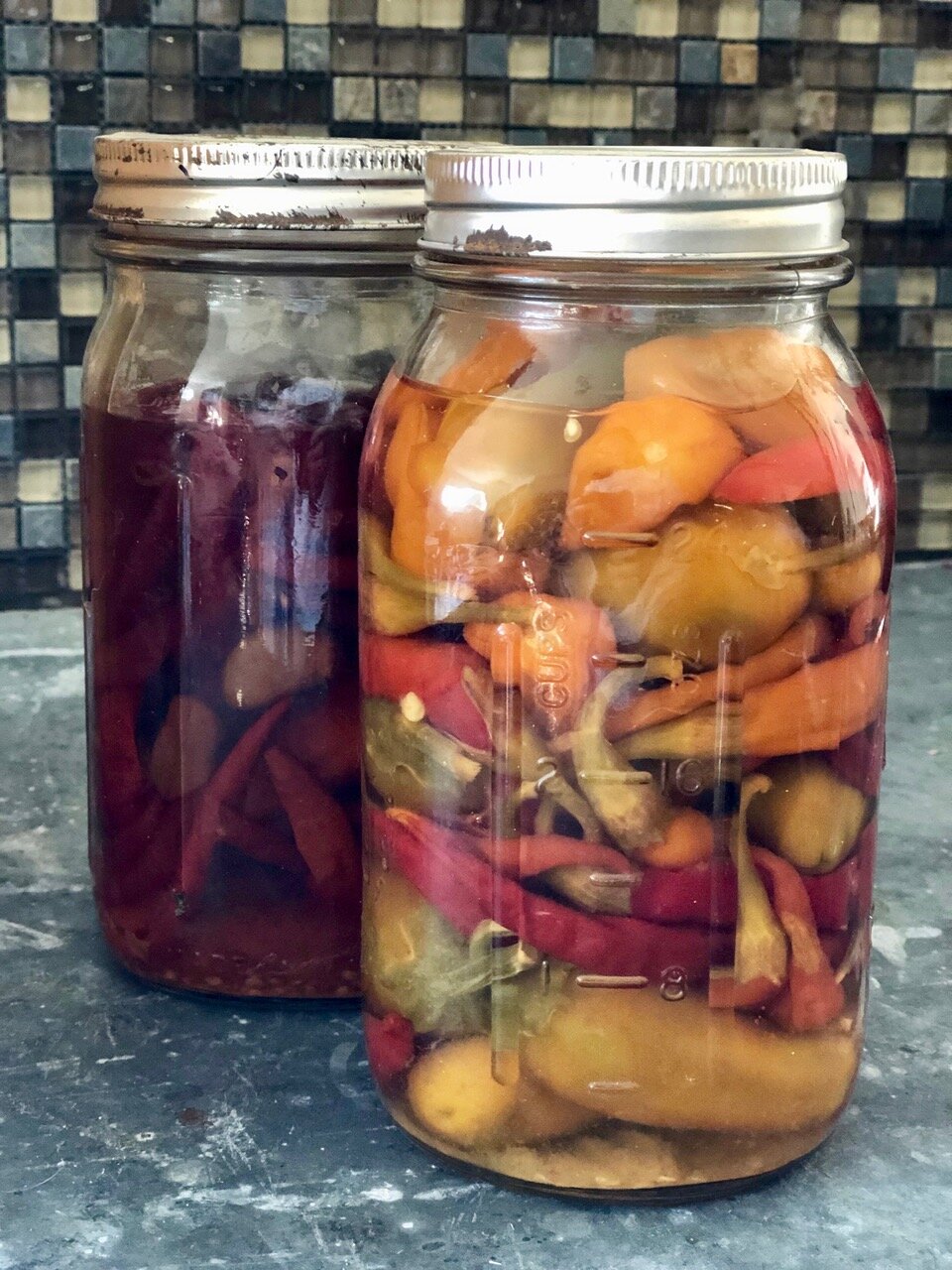These aged fermented hot sauces are an example of the versatility of fermentation-preserved foods. They are also an example of zero-waste, or whole utilization, at work. If we are being perfectly honest, they are the result of years of procrastination. These little bottles are packed with flavor and feel in many ways like a time-capsule of gardens past.
Years of procrastination? You ask. We garden, I develop fermentation recipes, we used to have four children at home…all adds up to there is often an abundance. There is more food than we can eat quickly. With fermentation this works out with many foods becoming more delicious. It also means that we have a few refrigerators of ferments waiting to be slowly (remembered and) eaten. In the case of these pepper ferments they dominated one of the refrigerators, many of which were from 2014-15 when I was actively growing a variety of unusual peppers and wildly experimenting for our book Fiery Ferments. Many where in the fridge and some still aging in room temperature. I have to say it was a fascinating flavor discovery of ferments lost and found. One very small jar (pictured below) was one that I have had since 2010—on purpose mind you. I have opened it periodically over the years to see what has happened and if it stays safe. I am afraid I didn’t take a picture of the refrigerator before. The few pictures below are well into the process. They are not pretty but proof that fermentation preserved foods, in this case “pickled peppers”, are amazing.
The truth is I needed room for this year’s new ferments, and it was way overdue. So even though this is my busiest harvest season and the worst time to have all encompassing project I had to deal with them. Many were mashes that simply needed to be run through a sieve or food mill to rid them of skins and seeds. Some of these mashes I dehydrated to make into various pepper seasonings. The rest became sauces. I have some single variety sauces, but most went into the same pot (including the last bit of the 10-year-old one). While I generally don’t heat my ferments, I needed to reduce the sheer volume, so I simmered this main pot of mixed pureed pepper ferments down for the better part of a day.
As it thickened it became richer, while it didn’t become noticeably salty the quality of the acidity changed. The heat hadn’t changed at all. You can read about fermentation and the heat compounds in peppers, capsaiciniods, here. added some of our homemade cider syrup and this smoothed it out. When it was done, I let it cool and added a little live raw sauerkraut brine and let it sit overnight, to bring back some live probiotic quality to the sauce and bottled it. While these are likely shelf stable, I am leaving all but one (the experiments must continue!) in the refrigerator. Now though instead of 3 shelves of jars this all takes up half a shelf—many of which will be leaving as gifts for the holidays.
To learn more about making fermented hot sauces check out our class at Fermentation School.






